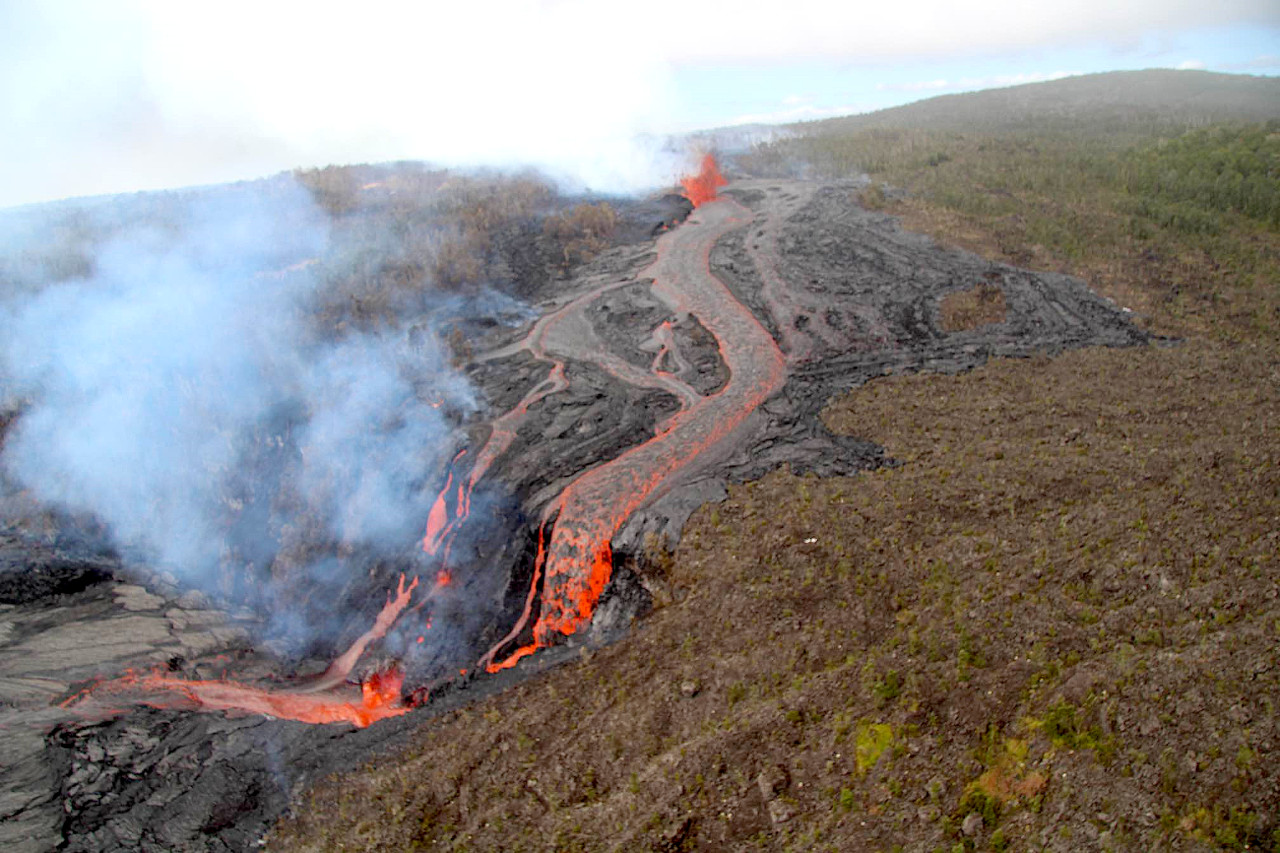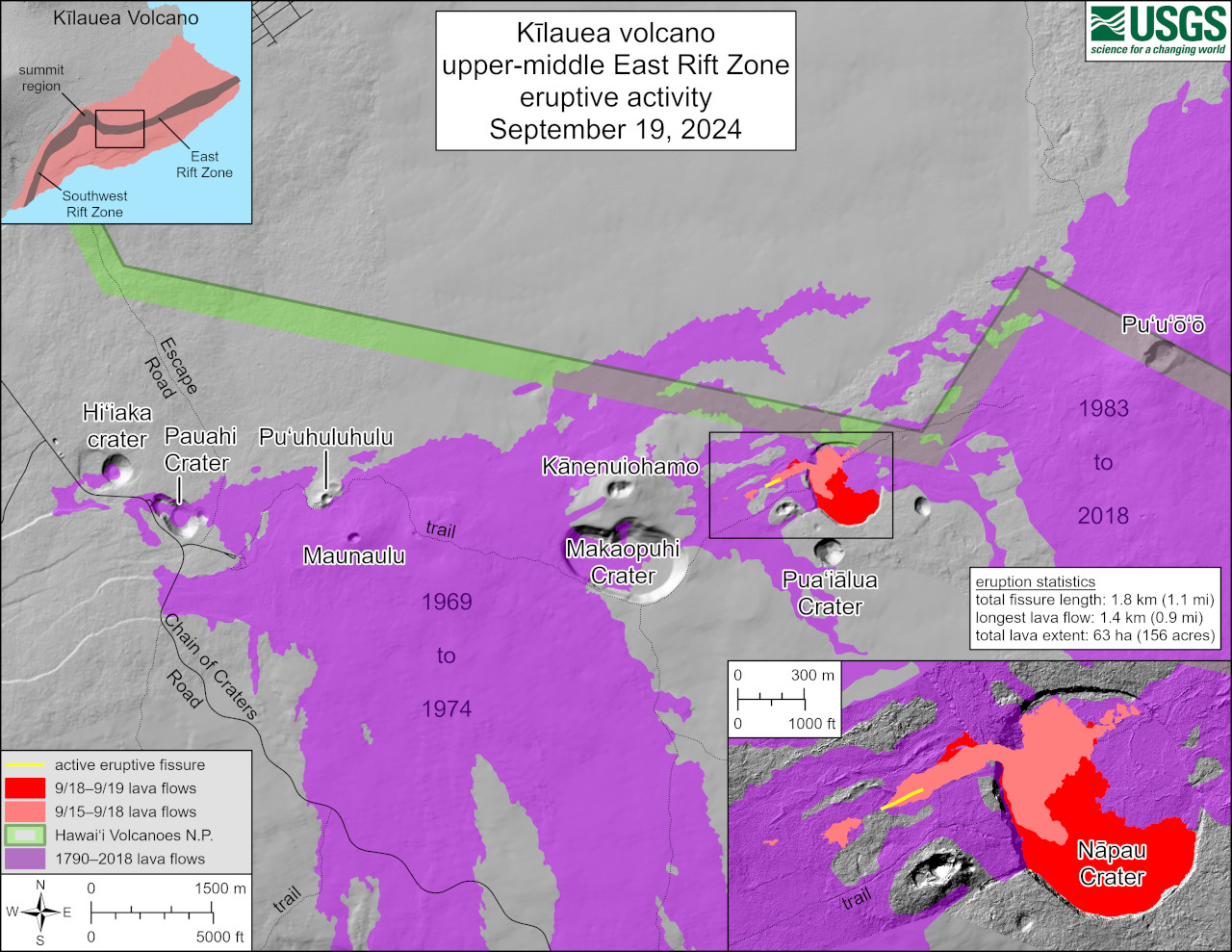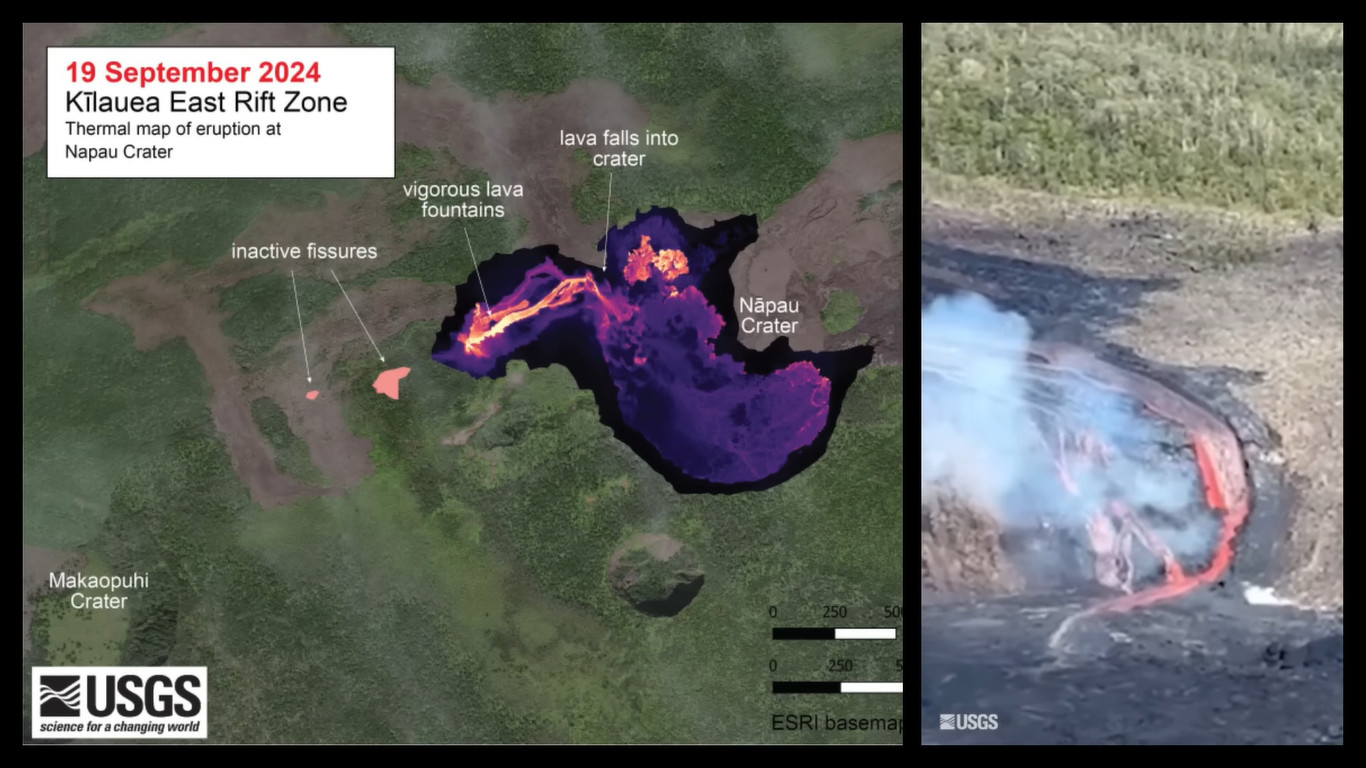This story accompanies the above video that was published on Thursday evening.
(BIVN) – Kīlauea continues to erupt on the middle East Rift Zone within a remote area of Hawaiʻi Volcanoes National Park, and the latest phase of the event is the most voluminous of the eruption so far.
This fourth phase began at around 3:15 p.m. on Wednesday afternoon, when a new fissure vent opened just west of Nāpau Crater, sending cascades of lava pouring over the western cliffs and rapidly covering the crater floor.
The lava falls could be seen at a distance throughout the night on a USGS webcam. In the morning, we got a closer look with this photo taken by geologists.

USGS: “USGS Hawaiian Volcano Observatory geologists conducted a reconnaissance overflight of the eruption near Nāpau Crater on the middle East Rift Zone of Kīlauea. They observed lava cascading over the rim of the crater from a channel more than 50 meters (about 164 feet) wide. Lava is contained within Nāpau Crater and now covers about two thirds of the crater floor.” (USGS photo by M. Zoeller)
As of noon on Thursday, new lava now covers about two thirds of the crater floor.
The USGS Volcano Alert Level remains at WATCH. Officials say there is no immediate threat to life or infrastructure, although residents of nearby subdivisions may experience volcanic gas emissions related to this activity which may increase and decrease over the coming hours and days.
Sulfur Dioxide emission rates measured yesterday afternoon at the new vent were 10,000 tunnes per day.

This reference map depicts fissures and lava flows from the Kīlauea middle East Rift Zone eruption on Thursday, September 19, 2024. Map data are current as of the Hawaiian Volcano Observatory helicopter overflight that occurred between 9:00 and 10:00 a.m. Areas in bright red represent new lava flows since the area was last mapped late on September 18, with these new flows now covering most of the floor of Nāpau Crater. In total, the fissure system has stretched over 1.8 kilometers (1.1 miles) of the East Rift Zone, with the lava flows now covering 63 hectares (156 acres).
This map is being updated often by the USGS, showing the progression of the lava flows over the course of the day. The map also gives an idea as to the location of the eruption. Scientists say there are no indications of any volcanic changes further downrift on the middle of lower East Rift Zones.
The Chain of Crater Road in the National Park was re-opened on Wednesday. However, the National Park Service warns that volcanic hazards have increased from the eruption site. Heavy concentrations of volcanic gasses and particulate matter may occur along Chain of Craters, and motorists are being asked not to stop at overlooks or on the side if the road. They say eruption viewing is not possible, although lava glow may be present in the sky over the activity. Visitors should be prepared for heavy traffic, long lines of cars, limited parking, and no restrooms.
Seismic tremor remains strong near the eruption site, and increased significantly with the onset of the new vent on Wednesday.
The Hawaiian Volcano Observatory says multi-day fissure eruptions are not unusual, and the current eruptive activity appears to be linked to supply of magma from the summit.


by Big Island Video News6:53 am
on at
STORY SUMMARY
HAWAIʻI VOLCANOES NATIONAL PARK - Officials say there is no immediate threat to life or infrastructure, although residents of nearby subdivisions may experience volcanic gas emissions related to this activity.